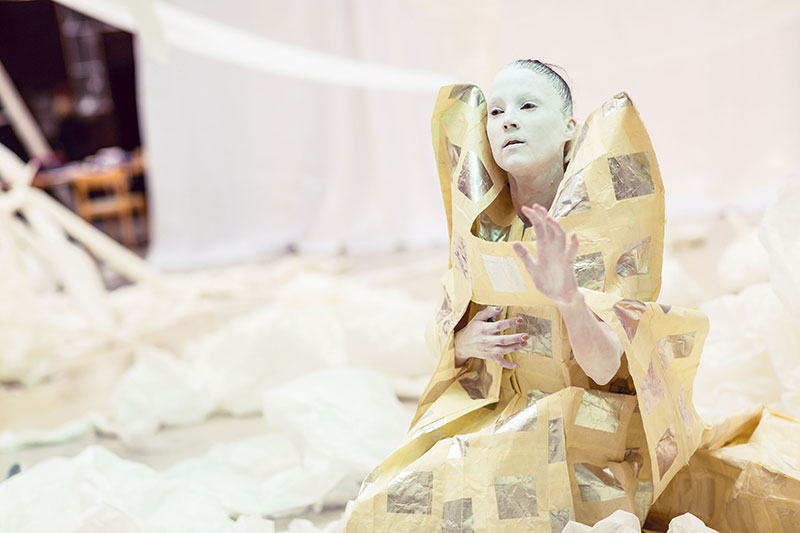
Staged artistic research at the AHA festival in Gothenburg. The exploration was done in collaboration with Butoh dancer Frauke around the thematic of natural farming. Copyright: Milan Abedi. Used with permission.
On Thursday, Nov 13, Anna Maria Orru explores the role of artistic research to ‘unearth’ transformed behavior when it comes to food and growing practices.
Update: This talk is now posted on YouTube, and embedded below.
What: Greenhouse Artist Talks
When: Thursday, Nov 13, at 17-19.
Where: Växthuset, Slottsträdgårdens kafé (map)
Whom: everyone, open to the public, but please sign up here!
Organoleptic* Interfaces: infectious gardens and digital starvation
What is the role of artistic research to unearth transformed behavior when it comes to food and growing practices? The active research explorations overlap sustainable living with garden play, composing sustainability into a pleasurable encounter. How do we identify with green spaces in cities, specifically urban gardening and new forms of creative and artistic user participation and civic dialogue at early stages of urban design processes?
In the digital and bodily cartographic methods, a transfer and democratization of spatial agency occurs. The digital became an interface for tacit reflection, whilst the body became an active transporter, incubator, and tool tracing the landscape from ground and stomach. The purpose behind these various forms of bodily exposure is to find further correspondences of the interaction between manipulations of data (archiving perhaps!), the sensorial language, the bodily-generated experiences of space, and the body in a state of alertness. Such data manipulations can occur at various levels of scale, method, instrument, social constructs, and climatic conditions.
Questions for digestion and discussion: Could one say that our sustainable relationship to the city is primarily shaped through our senses? And, that in return, our senses shape the sustainable built environment to a certain degree?
* Organoleptic properties are the aspects of food or other substances as experienced by the senses, including taste, sight, smell, and touch, in cases where dryness, moisture, and stale-fresh factors are to be considered (source: Wikipedia).
Anna Maria Orru is PhD candidate at Chalmers University of Technology. Her work covers the distinct topics of food, architecture, senses and urbanism, explored through the distinct study of organoleptic qualities in urban foodscapes, as a way to explore food systems on both the macro and micro levels. Read more.
Read more about and see the full programme of the Greenhouse Artist Talks lecture series here.
For more information, contact Veronica Wiman.



